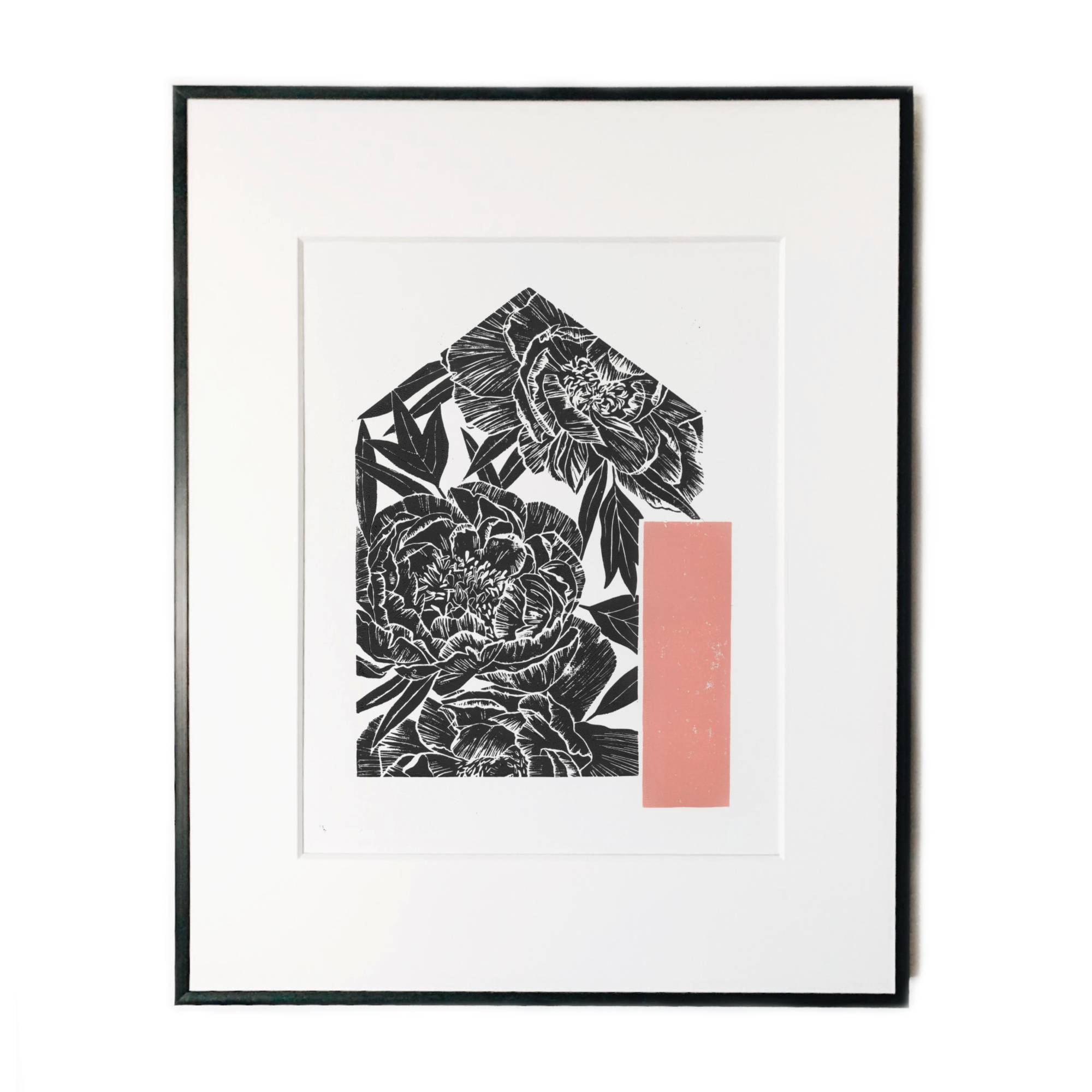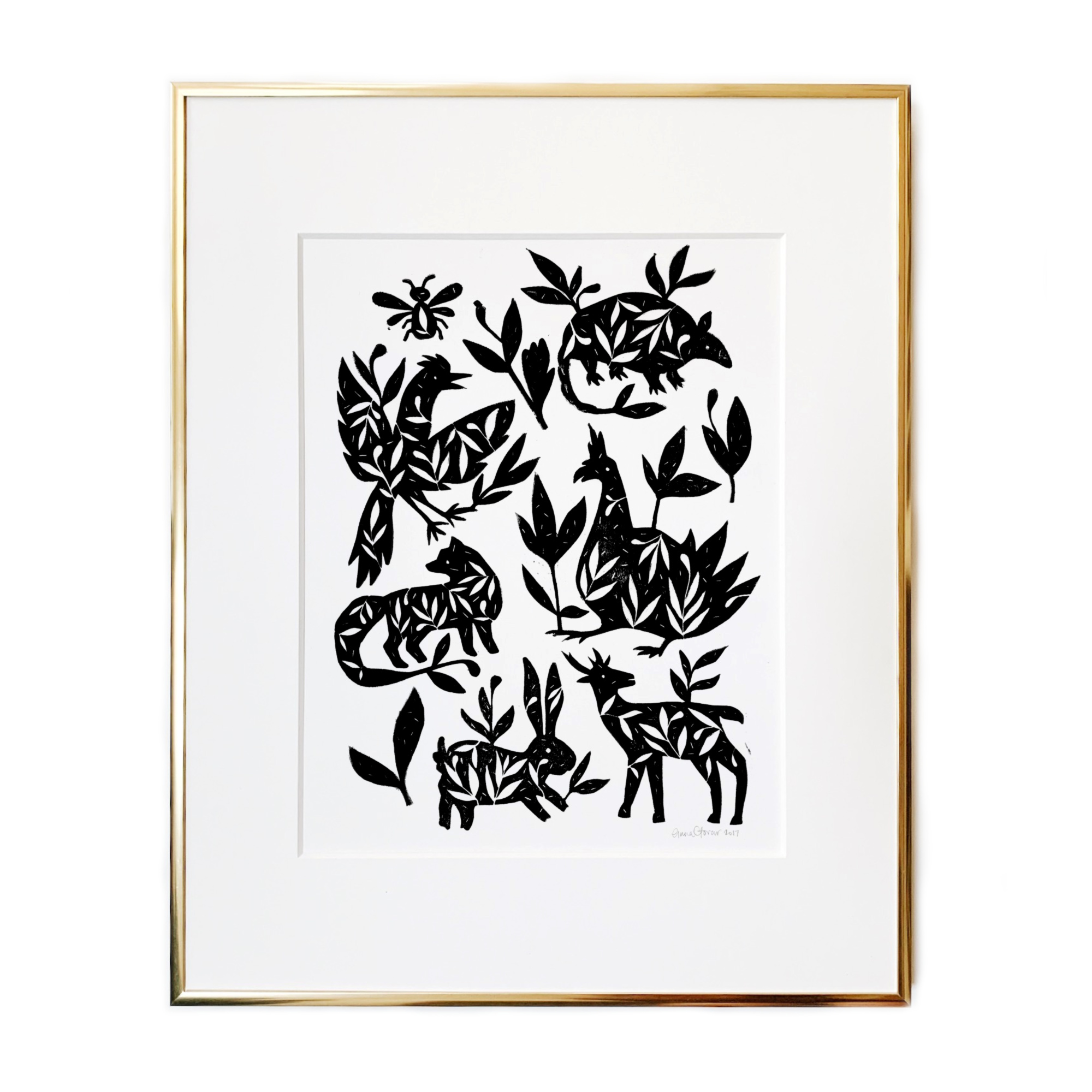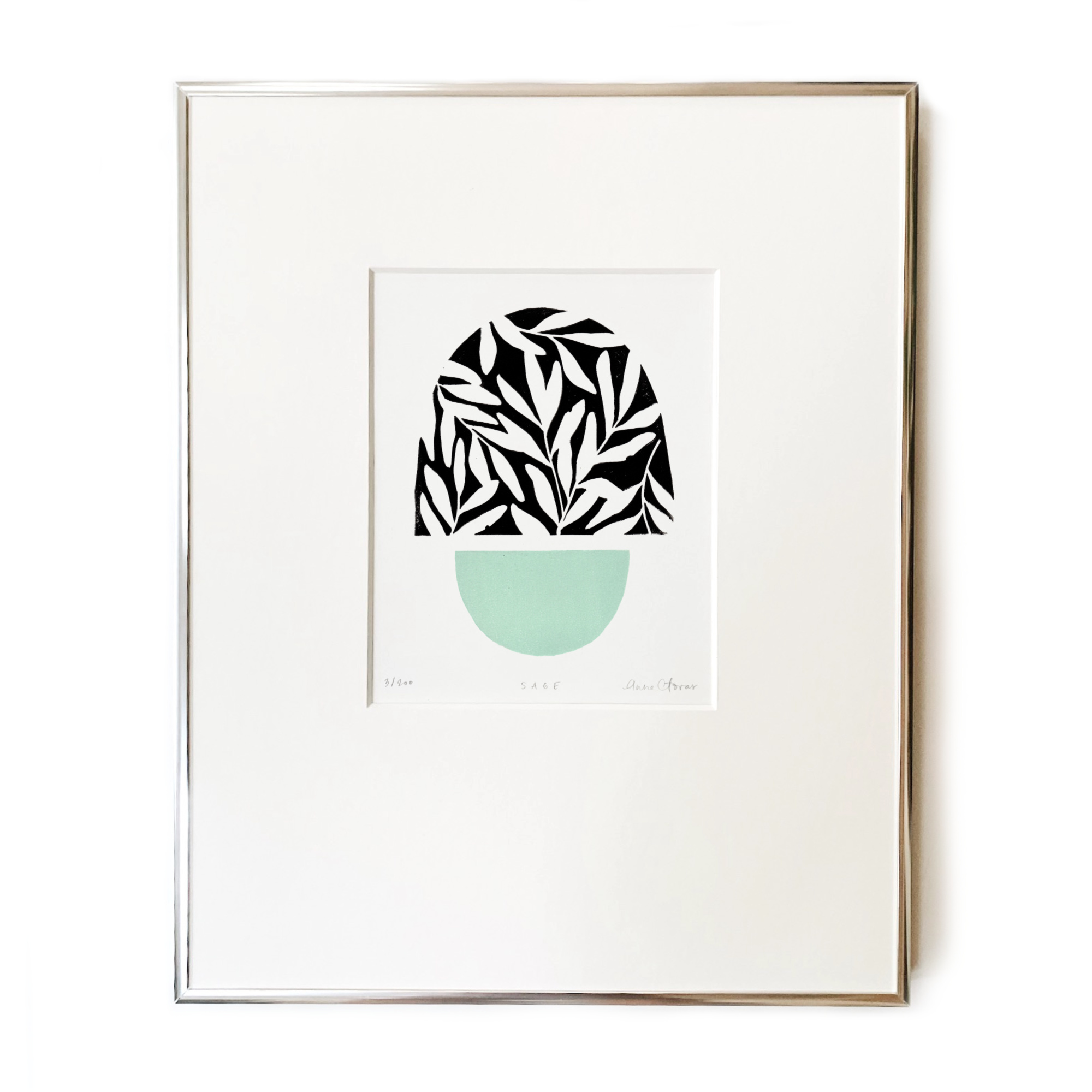FRAMING GUIDE
Framing your new print is a necessity if you hope to keep it in great condition for years and years to come. I get asked frequently about recommendations for framing based on visual preferences, but there are other variables than one should consider before making a purchase. What are those variables? There are usually two main goals when it comes to framing: either a focus on high quality, art preserving materials, or a focus on inexpensive and fast.
The framing materials you choose really do matter for the life of the print. If you use a professional framing service, like Framebridge or your local framing shop, you are going to end up with a piece that is carefully contained in an acid-free, UV resistant environment. However, having a piece custom framed isn’t in everyone’s budget, and I don’t believe that means that it isn’t possible to choose framing options that are beneficial in preserving the life of your print.
Because we believe that framing shouldn’t feel like a daunting task, my hope is to compile a list of options that are affordable, good for the life of your art, and that look great with any piece you may be framing.
PROS: I love these frames. They are clean and simple, and don’t take away from the focus, which is the art. They come in a wide variety of sizes and colors, including natural wood (shown here), walnut, white and black.
CONS: The styrene (plexiglass) that the frame comes with is not UV resistant, but you can simply and affordably swap it out for this sheet, and you’ll be good to go.
PROS: They’re simple, durable, and really pretty. The front profile of the frame is nice and thin, but they’re 1 3/8” deep, so they look and feel high quality. They come in gold, silver, and matte black, which is oh so beautiful.
CONS: They’re not as user friendly to put together. The process of framing involves a screw driver and little screws, and a bit of a learning curve that doesn’t take long to get the hang of. These also come with a sheet of styrene (plexiglass) to cover your art that isn’t UV resistant, but you can swap that out for this, which will offer you UV protection.
IKEA FRAMES
PROS: I usually buy the RIBBA frames, which resemble the Blick wood gallery frames. They’re affordable and convenient depending on where you live.
CONS: I’ve had many many of these frames, and they just do not hold up all that well. The frames bend and bow over time, or they split at the corners completely. This hasn’t happened to all of my RIBBA frames, but it’s happened to a lot of them. Some of the sizes are American sizes, and some are European sizes, so that can be tricky as well.
TARGET FRAMES
PROS: Affordable. Super convenient. Lots of variety. I’ve used several of their frames for my product photography, and haven’t had any issues with their construction
CONS: They don’t offer much, if anything, for framing above 16x20 inches. I also can’t speak to the type of glass they use, but considering they are so affordable, I would assume that there isn’t any sort of UV protection happening.
I hope this information has been helpful in simplifying the framing process so that you can make an easy and informed decision about what works best for you.
If you have any further questions, feel free to reach out to us, and we’ll be happy to help you.






